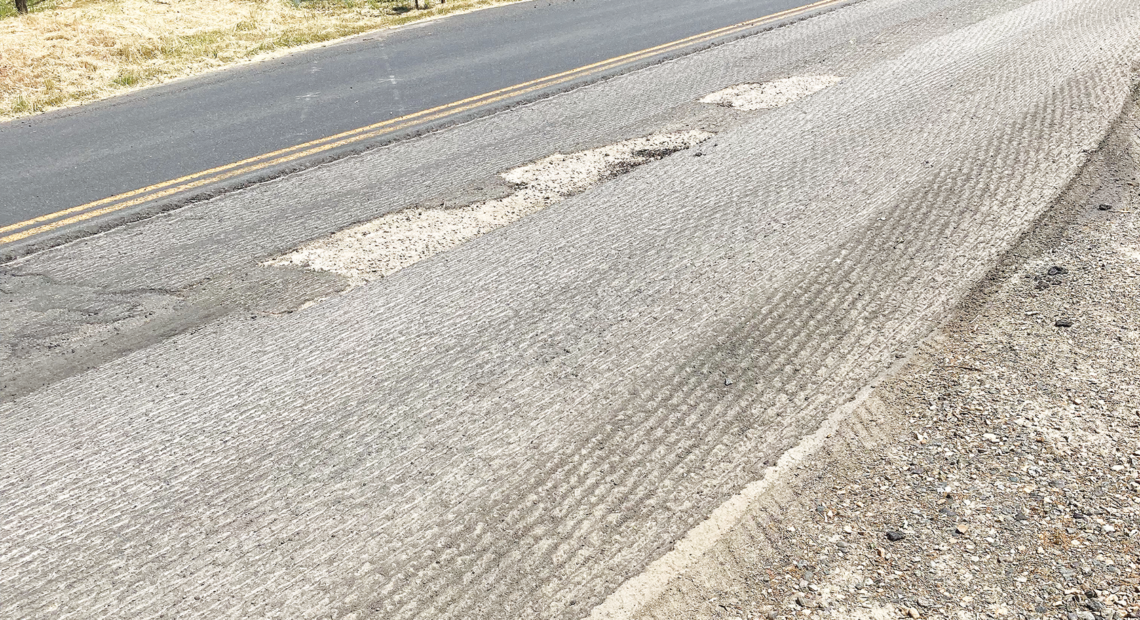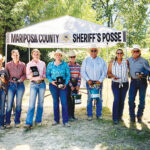
Could PG&E’s patchwork road repair leave the county hanging out to dry?
Will taxpayers be left holding the bill?
By R.D. Tucker
Last summer, many Mariposa County residents traveling the local roadways endured Pacific Gas and Electric’s (PG&E) power line undergrounding project. The behemoth utility company, now the most expensive provider in the United States, is patting itself on the back with every media opportunity as well as through paid commercials, touting its new-found dedication to preventing wildland fires.
Through a good portion of last year, and all through the winter, local residents have been dodging the uneven road surfaces left by the trenching on Darrah Road, Triangle Road, East Westfall Road, and other tributary roadways. Reportedly much more undergrounding of utility lines is on the horizon.
Just a few weeks ago, PG&E began repaving those trenches, but some experts seriously question if this will be a lasting fix. Will it deteriorate rapidly, leaving the county with more roadwork to complete within a severely limited public works budget?
In an article on this same subject in the February edition of The Mariposan, it was reported that a seasoned construction manager with one of the state’s larger paving contractors spoke with The Mariposan about the reconstruction phase.
He agreed to provide information under the condition of anonymity for fear of retribution from the power company or the loss of future contracts.
The paving construction manager said that in all likelihood, PG&E will contract for what is commonly known as a “full 2-inch grind and overlay.” What that entails is milling the one lane down to grade bed, then overlaying with new, hot asphalt.
Currently PG&E is indeed doing a two-inch overlay on the damaged road surfaces.
However, that same paving manager said that a two-inch overlay probably isn’t adequate since there will be movement within those trenches with each change in the weather, not to mention daily traffic wear. The overlay will probably fail, leaving another obstacle for local travelers. He believes the only way to properly repair the roadway is with a full four-inch repaving, which would last for years.
Shannon Hansen, Mariposa County Director of Public Works, said, “PG&E, like all other franchise utility providers, is only required to restore the roads to their existing condition. According to PG&E’s 1958 agreement, they must restore the roads to ‘… as good order and condition as that in which they were before being disturbed or excavated for the purpose of installing, maintaining and using said poles, wires, conduits and appurtenances, or any part thereof.’
“PG&E’s subcontractor filled the trenches with slurry up to within two inches of the finished surface and placed temporary asphalt on Triangle Road. The paving subcontractor then returned to remove the top two inches containing the temporary asphalt and replaced it with permanent hot mix. Aside from the paved section of Triangle Road between Carleton Road and Triangle Ranch, when the contractor milled the two inches of temporary asphalt, native soils were exposed. There is no predetermined depth of repair. Public Works has had staff on site, and thus far, we are pleased with the work,” Hansen added. “My staff and I continue to meet with PG&E weekly to ensure they are following the agreed-upon rehab.”
In 2021, just a year before the devastating Oak Fire, 2.3 miles of Triangle Road got a new facelift at a cost of just over a million dollars. Darrah Road typically hosts 2,000 vehicles per day, and Triangle Road is also well-traveled. Both heavily traveled roads could be in serious disrepair in a short span of time.
Mark Norman, a local resident who was a senior construction inspector for the Merced County and Santa Clara County public works departments has similar concerns.
“I witnessed PG&E and its contractors essentially cut our roadway in half about a year ago to underground their electric transmission and distribution grid. Then this past week they came through and did a two inch “mill and fill” to “restore” the roadway. When they were undergrounding, I watched them cut through an eight-inch section of asphalt for their trench. A two-inch mill and fill is a mere bandaid, and will fail within a few short years. They essentially destroyed our roadway and the County stood by and allowed it to happen. Apparently, we don’t have any engineers or inspectors on the payroll to provide oversight and look out for our precious infrastructure. PG&E did the damage, but I hold the County responsible for not providing oversight and is derelict in their duty to look out for our investments. Shame on them to allow this,” Norman stated.
Mariposa County’s agreement for oversight on PG&E projects is only supported by Ordinance No. 191, dated April 10, 1958.
The County is relying on Section 6 of the ordinance that states: “at its own cost and expense place said public roads, or so much thereof as may have been damaged thereby, in as good order and condition as that in which they were before being disturbed or excavated for the purpose of installing, maintaining, and using said poles, wires, conduits and appurtenances, or any part thereof.”
The Mariposan reached out to District 5 Supervisor Miles Menetrey, and District 4 Supervisor Wayne Forsythe, since a good portion of the roadway repair is occurring in their districts.
Menetrey said, “I will have to defer to public works on the question of the agreement/warranty of the restoration work to Triangle Road. I can tell you that representatives from PG&E appeared in our boardroom and assured the board that the road would be ‘repaired to as good or better’ than when the undergrounding started. I have also had the same assurances while at quarterly meetings with PG&E representatives in Sacramento.
“As far as recourse in the case of pavement failure, I assume it would take the same course as any failure of a paving project,” he continued. “In 2017 the paving on the south end of Triangle Road was failing very soon after completion, and the contractor was compelled to redo the work.
“Again, I must defer to public works, but I do not believe there has been any four-inch paving done on county roads. My recollection is that two inches has been the standard.”
“I would refer you to public works and the road engineers as well as Shannon Hansen, Director of Public Works. I am not an engineer, nor would I profess to be an expert in that area,” responded Forsythe.
After multiple attempts, The Mariposan was unable to connect with anyone at PG&E who would address the issue.


















